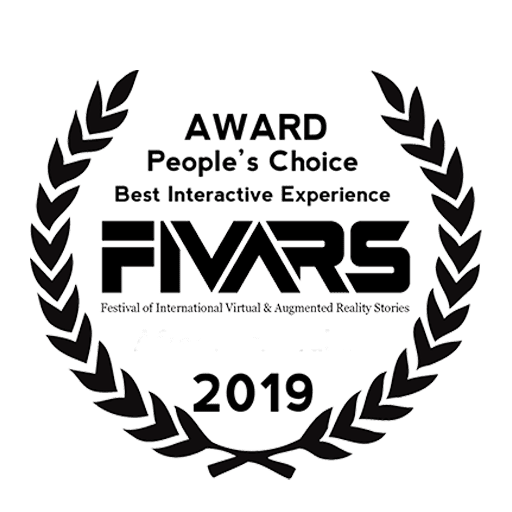Reports say the virtual reality market is expected to reach $56.25 billion by 2025. This expanding market presents a prime opportunity for businesses to consider developing VR software solutions. Virtual reality (VR) has substantially advanced in gaming, education, and healthcare.
As we approach 2024, the demand for advanced VR development software is increasing. Developers and businesses are looking for tools to facilitate the creation of engaging and immersive digital experiences.
Here are the top 10 VR development software options for 2024, tailored to support a wide range of VR projects.
What is Virtual Reality Development Software?
Virtual reality development tools enable developers to create and construct 3D virtual worlds and immersive experiences. These platforms offer tools for creating virtual worlds, including features for 3D modeling and compatibility with various devices. Used across diverse industries such as gaming, training, education, and entertainment, this software creates interactive experiences that users can engage with through VR headsets and other input devices.
Key Features of Virtual Reality Development Software:
3D Modeling and Animation: Use advanced modeling and animation tools to Create complex environments, objects, and characters.
Cross-Platform Support: Compatible with VR headsets, desktops, and mobile devices for versatile accessibility.
Immersive Interaction: Users can use gestures, controllers, or voice commands to engage with virtual environments.
Multi-User Collaboration: Allows several users to interact within the same virtual environment at the same time.
Integration with External Tools: Seamlessly integrates with game engines, design software, and analytics platforms.
Customizable VR Experiences: Developers can create tailored VR content for various industry needs.
Top 10 Virtual Reality Development Software
1. Maya
Maya is a premier 3D modeling and animation software widely used in film and gaming industries. Its robust toolset for crafting detailed 3D models makes it an excellent option for virtual reality projects.
Best for: Creating intricate 3D models and animations
Key Feature: Customizable interface with advanced simulation capabilities
2. Unreal Engine
Unreal Engine is well-known for its superior graphics quality and real-time rendering features. It’s a top choice for developing realistic virtual environments in VR games.
Best for: High-performance gaming and cinematic experiences
Key Feature: Real-time photorealistic rendering integrated with VR
3. Unity
Beginners and experienced developers prefer Unity due to its user-friendly interface and robust community support. It’s ideal for building VR applications and games across different platforms.
Best for: Cross-platform VR development
Key Feature: Extensive asset store to accelerate development
4. Steam VR
Developed by Valve, Steam VR is a versatile platform for creating VR experiences, particularly for gaming. It supports a range of VR hardware and provides a robust framework for development.
Best for: VR gaming and applications
Key Feature: Compatibility with major VR systems like HTC Vive, Oculus, and Windows Mixed Reality
5. Cognitive3D
Cognitive3D examines user interactions within virtual reality settings. It provides useful insights to improve and optimize VR experiences.
Best for: Analytics and tracking user behavior
Key Feature: Advanced analytics, including heatmaps and data visualization
Working with a trusted virtual reality app development company is essential for success. You can always count on Euphoria XR— a leading IT consulting and software firm that designs custom AR/VR solutions.
6. Google VR
Google VR provides developers with tools to create immersive VR experiences for mobile and standalone devices. It’s a solid choice for both small and large VR projects.
Best for: Mobile VR development
Key Feature: Broad compatibility with devices like Daydream and Google Cardboard
7. Spark AR Studio
Spark AR Studio enables the creation of interactive experiences by blending augmented reality (AR) with virtual reality. It’s particularly useful for content intended for social media platforms.
Best for: AR/VR development and integration with social media platforms
Key Feature: User-friendly tools for creating AR/VR content for platforms such as Instagram and Facebook
8. Blender
Blender is an open-source tool for creating 3D models, animations, and renderings. Its strong community supports it and offers a range of features for VR developers seeking cost-effective solutions.
Best for: Open-source 3D modeling and animation
Key Feature: Extensive toolset with regular updates from the community
9. VR Maker
VR Maker simplifies the process of creating 360-degree virtual reality content. Its drag-and-drop interface is ideal for users without extensive coding experience.
Best for: Creating 360-degree VR content
Key Feature: Intuitive interface with easy VR headset integration
10. CenarioVR
CenarioVR is designed for building immersive learning simulations. It features drag-and-drop tools for creating interactive training environments without requiring advanced coding skills.
Best for: VR training and educational simulations
Key Feature: Integration with Learning Management Systems (LMS) and real-time analytics
Ready to Start VR Development?
The above software options offer diverse tools for various aspects of VR development. Consider working with a reliable Virtual Reality Development Company. Euphoria XR is a trusted leader in VR development, offering a team of skilled developers who are experienced in delivering exceptional VR projects. Contact us today to discuss your project, and we’ll help turn your ideas into immersive virtual experiences.















